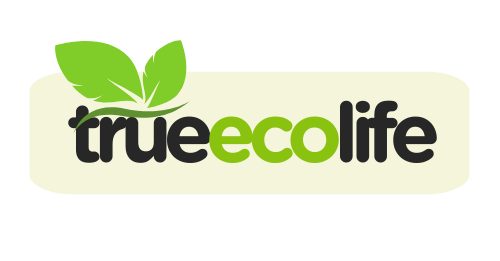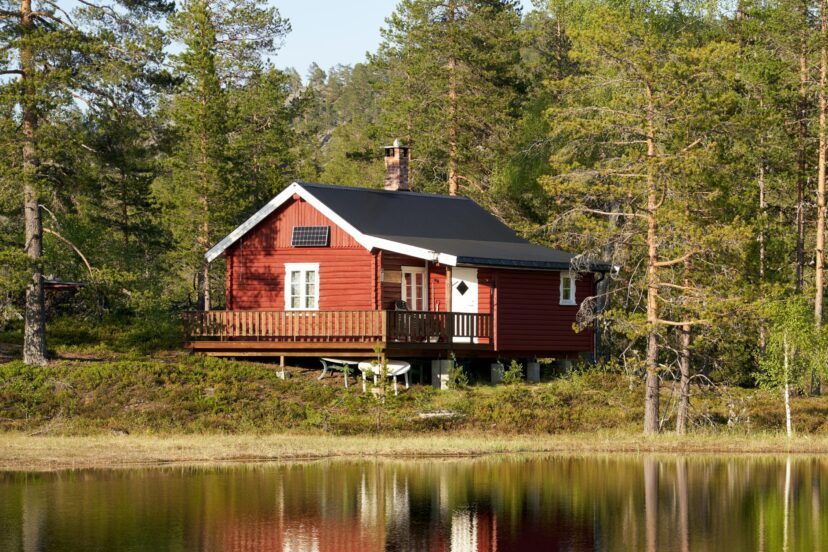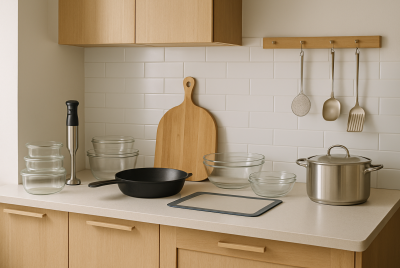Living Off The Grid: 8 Steps To Create A Sustainable Living Space
We may earn a commission for purchases made using our links. Please see our disclosure to learn more.
Many people dream of breaking free from being heavily dependent on the grid for water, food, and even electricity. However, most of them aren’t sure where to even begin. That’s understandable! Living off the grid seems overwhelming and just the thought of completely relying on yourself sounds daunting, isn’t it? Even so, what if you had a clear plan? With the right steps, you can create a self-sufficient and sustainable home. Here are 8 simple steps to help you build a truly independent and sustainable living space.
1. Choose the Right Location
The right piece of land is the first step in building an off-grid existence. You should look for a location that gives you the resources you need to be self-sufficient in addition to the space you require. Find a land that has a reliable supply of water, rich soil for food production, and lots of sunlight for solar energy. Even while isolated places can be alluring, consider accessibility, local laws, and whether you want to live in total isolation or as part of an off-grid community. The tone of your off-grid experience will be based on striking the correct balance between convenience and solitude.
2. Secure a Reliable Water Source
One of the most important aspects of living off the grid is having a sustainable source of water all year round (because water is a basic need!). Although it needs an initial expenditure, a well is a fantastic long-term option. You already have an advantage if there is a spring or stream on your property. Another wise choice is rainwater collecting, particularly if you are in a region that has frequent rains. Filtration and purification systems are essential to maintaining clean, safe water for drinking and everyday usage, regardless of the approach you take.
3. Generate Off-Grid Power
You have a few great choices for energy that will keep your house running smoothly without relying on the grid. The most often used option is solar electricity, which has a minimal maintenance cost and is dependable and sustainable. If you live in a windy place, wind turbines can be a nice addition, and if there is a running water source nearby, hydropower is an excellent option. For a more reliable configuration, many off-grid households mix several sources. In order to guarantee that you always have electricity when you need it, having a backup generator can also be useful on long gloomy, or windless days.
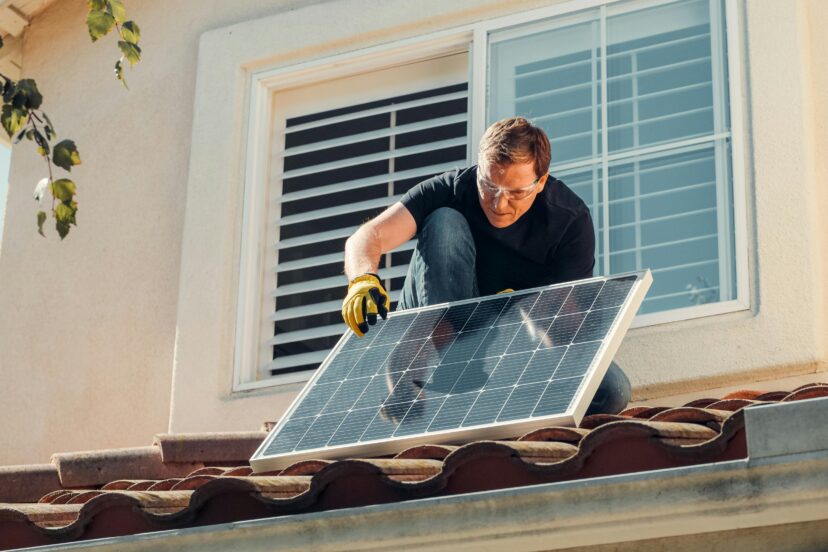
4. Build an Energy-Efficient Shelter
Your home is more than just a shelter—it’s your sanctuary, and designing it with energy efficiency in mind will make a huge difference in your off-grid lifestyle. Want to avoid using too much heating and cooling? If that’s the case, you can just use a passive solar design. It helps keep your home cool in the summer and warm in the winter. Proper insulation, strategically placed windows, and sustainable building materials like reclaimed wood or straw bale construction will all contribute to a more efficient home. If you’re planning to stay off-grid long-term, think about water recycling systems and composting toilets to minimize waste and maximize sustainability. Your home should be designed to work with nature, not against it.
5. Grow Your Own Food
Living off the grid means being responsible for your own food supply, and there’s nothing more rewarding than harvesting your own fresh produce. Start by growing a variety of vegetables, herbs, and fruits suited to your climate, and consider implementing permaculture techniques to create a self-sustaining garden. Raising small livestock such as chickens, goats, or rabbits can provide a steady source of eggs, milk, and meat. Food preservation techniques like canning, drying, and fermenting will ensure you have plenty to eat year-round. By planning your garden and food storage wisely, you’ll never have to worry about running out of fresh, homegrown meals.
6. Manage Waste & Sanitation
Waste management is often overlooked when people dream about off-grid living, but it’s an essential part of creating a sustainable home. Composting toilets are an excellent alternative to traditional septic systems, turning waste into nutrient-rich compost for your garden. A greywater system can help recycle water from sinks and showers for irrigation, reducing overall water consumption. Reusing and repurposing materials as much as possible will minimize waste, and proper composting will help you get the most out of your food scraps. The goal is to ensure that nothing goes to waste, keeping your home and land as clean and efficient as possible.
7. Create Off-Grid Security & Communication
You don’t have to be totally isolated from the outside world just because you live off the grid. Reliable communication is crucial, especially in emergencies. HAM radios and satellite phones can be lifesavers in areas with little to no cell service. If internet access is a priority, satellite internet or cellular boosters can help keep you connected. Security is another key factor—installing fences, keeping dogs, or having a security system in place can help protect your home from both wildlife and intruders. A good balance of connection and security will give you peace of mind while maintaining your independence.
8. Develop Off-Grid Skills & Mindset
Living off the grid requires a mindset shift, as you’ll be handling many things on your own. It’s essential to learn practical skills such as basic carpentry, plumbing, and electrical work to maintain your home. First aid knowledge is also crucial since medical help may not be easily accessible. Understanding how to grow food, store provisions, and fix broken equipment will save you time and money. Beyond the physical skills, cultivating patience, adaptability, and a problem-solving attitude will make your off-grid journey far more enjoyable. The more prepared you are, the more confident you’ll feel in your ability to thrive independently.
Essential Products for Off-Grid Living
To help you successfully transition to an off-grid lifestyle, here are some essential products that will make your journey smoother and more sustainable:
- Solar Power System – A high-efficiency solar panel kit with a battery storage system to keep your home powered.
- Water Filtration System – A gravity-fed or UV water purifier to ensure clean and safe drinking water.
- Composting Toilet – An eco-friendly waste management solution that helps recycle nutrients into compost.
- Rainwater Collection System – A durable rainwater harvesting kit with proper filtration.
- Portable Generator – A backup power source for emergencies or periods of low solar/wind energy.
These products will help you establish a sustainable, self-reliant off-grid home while ensuring comfort, efficiency, and security.
Innovative Energy Solutions for Off-Grid Living
Developing cost-effective and adaptive energy solutions is crucial for sustainable off-grid living. A study on the Dynamic Energy Beacon introduces a power management system that efficiently harvests energy, providing a steady output of 200 to 300 Watts, offering a viable solution for remote areas. Additionally, solar energy remains a dominant force in powering self-sufficient lifestyles, reducing carbon footprints while ensuring energy independence. To explore how solar power enables off-grid sustainability, check out this insightful article on solar-powered off-grid living.
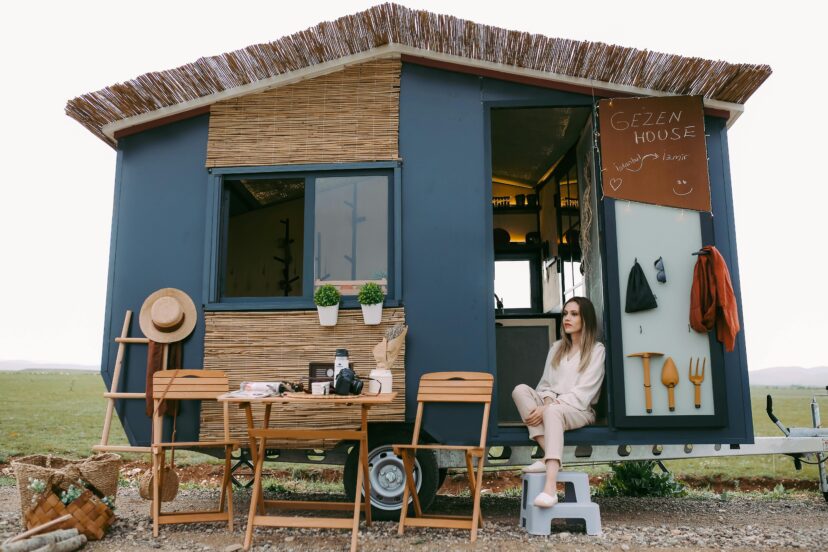
Final Thoughts
Making the transition to off-grid living is a big step, but it’s also an incredibly rewarding one. It offers freedom, sustainability, and a deep connection to nature that’s hard to find in modern society. However, it does require commitment, planning, and a willingness to adapt. By following these eight steps, you can create an independent, self-sufficient home that supports your values and goals. Whether you go fully off-grid or start small with a few changes, the journey to a more sustainable life is always worth it.
FAQs
1. Is living off the grid legal?
Laws vary depending on location. Some areas welcome off-grid living, while others have zoning laws that require certain infrastructure.
2. What are the costs of living off-grid?
Costs depend on factors like land price, energy setup, and home construction. Although the initial cost may be huge, the long-term utility savings make it reasonable.
3. What are the main issues of living off the grid?
Managing power, water, and food production can be challenging, especially in extreme weather conditions. Having a solid plan in place will help you overcome these difficulties.
4. Can you still have internet access when living off the grid?
Yes, satellite internet and cellular boosters allow many off-grid homes to stay connected while maintaining their independence.
5. How do I start living off the grid with little money?
Start small by growing your own food, using solar energy, and repurposing materials. Gradually build up your homestead as you gain more resources and knowledge.
